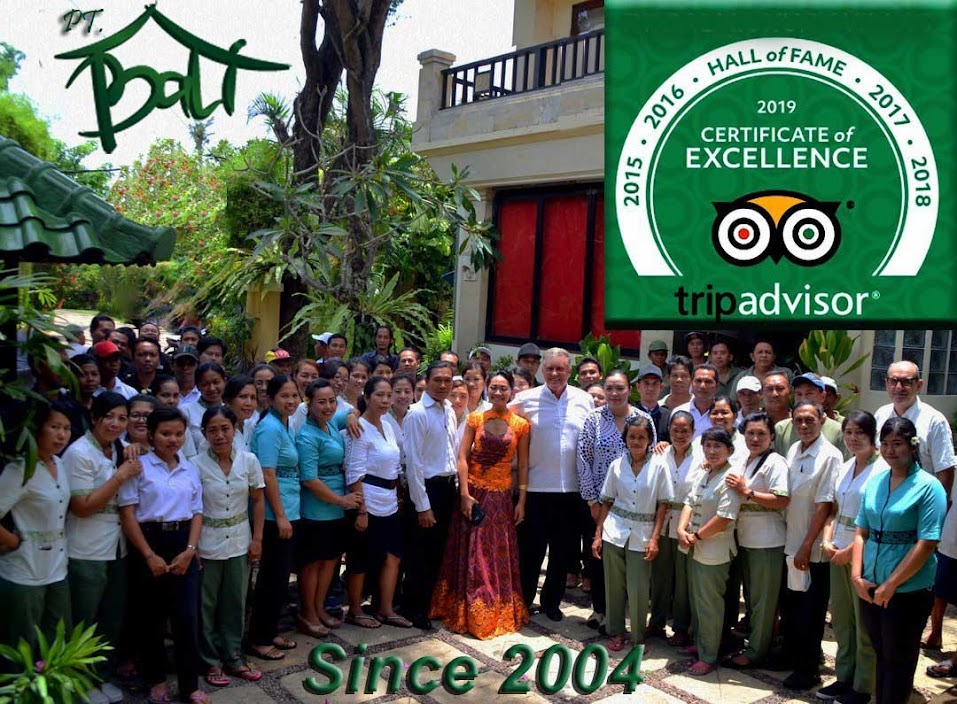By DAVE KEHRAUG. 20, 2017
Continue reading the main storyShare This Page

Jerry Lewis wrote, produced and directed many of his own films. CreditJohn Springer Collection/Corbis, via Getty Images
Jerry Lewis, the comedian and filmmaker who was adored by many, disdained by others, but unquestionably a defining figure of American entertainment in the 20th century, died on Sunday morning at his home in Las Vegas. He was 91.
His death was confirmed by his publicist, Candi Cazau.
Mr. Lewis knew success in movies, on television, in nightclubs, on the Broadway stage and in the university lecture hall. His career had its ups and downs, but when it was at its zenith there were few stars any bigger. And he got there remarkably quickly.
Barely out of his teens, he shot to fame shortly after World War II with a nightclub act in which the rakish, imperturbable Dean Martin crooned and the skinny, hyperactive Mr. Lewis capered around the stage, a dangerously volatile id to Mr. Martin’s supremely relaxed ego.
After his break with Mr. Martin in 1956, Mr. Lewis went on to a successful solo career, eventually writing, producing and directing many of his own films.Continue reading the main story
ADVERTISEMENTContinue reading the main story
As a spokesman for the Muscular Dystrophy Association, Mr. Lewis raised vast sums for charity; as a filmmaker of great personal force and technical skill, he made many contributions to the industry, including the invention in 1960 of a device — the video assist, which allowed directors to review their work immediately on the set — still in common use.
A mercurial personality who could flip from naked neediness to towering rage, Mr. Lewis seemed to contain multitudes, and he explored all of them. His ultimate object of contemplation was his own contradictory self, and he turned his obsession with fragmentation, discontinuity and the limits of language into a spectacle that enchanted children, disturbed adults and fascinated postmodernist critics.
Jerry Lewis was born on March 16, 1926, in Newark. Most sources, including his 1982 autobiography, “Jerry Lewis: In Person,” give his birth name as Joseph Levitch. But Shawn Levy, author of the exhaustive 1996 biography “King of Comedy: The Life and Art of Jerry Lewis,” unearthed a birth record that gave his first name as Jerome.Slide Show

SLIDE SHOW
Jerry Lewis | 1926-2017
CreditPhilippe Halsman/Magnum Photos
His parents, Danny and Rae Levitch, were entertainers — his father a song-and-dance man, his mother a pianist — who used the name Lewis when they appeared in small-time vaudeville and at Catskills resort hotels. The Levitches were frequently on the road and often left Joey, as he was called, in the care of Rae’s mother and her sisters. The experience of being passed from home to home left Mr. Lewis with an enduring sense of insecurity and, as he observed, a desperate need for attention and affection.
An often bored student at Union Avenue School in Irvington, N.J., he began organizing amateur shows with and for his classmates, while yearning to join his parents on tour. During the winter of 1938-39, his father landed an extended engagement at the Hotel Arthur in Lakewood, N.J., and Joey was allowed to go along. Working with the daughter of the hotel’s owners, he created a comedy act in which they lip-synced to popular recordings.
By his 16th birthday, Joey had dropped out of Irvington High and was aggressively looking for work, having adopted the professional name Jerry Lewis to avoid confusion with the nightclub comic Joe E. Lewis. He performed his “record act” solo between features at movie theaters in northern New Jersey, and soon moved on to burlesque and vaudeville.
In 1944 — a 4F classification kept him out of the war — he was performing at the Downtown Theater in Detroit when he met Patti Palmer, a 23-year-old singer. Three months later they were married, and on July 31, 1945, while Patti was living with Jerry’s parents in Newark and he was performing at a Baltimore nightclub, she gave birth to the first of the couple’s six sons, Gary, who in the 1960s had a series of hit records with his band Gary Lewis and the Playboys. The couple divorced in 1980.
Between his first date with Ms. Palmer and the birth of his first son, Mr. Lewis had met Dean Martin, a promising young crooner from Steubenville, Ohio. Appearing on the same bill at the Glass Hat nightclub in Manhattan, the skinny kid from New Jersey was dazzled by the sleepy-eyed singer, who seemed to be everything he was not: handsome, self-assured and deeply, unshakably cool.
When they found themselves on the same bill again at another Manhattan nightclub, the Havana-Madrid, in March 1946, they started fooling around in impromptu sessions after the evening’s last show. Their antics earned the notice of Billboard magazine, whose reviewer wrote, “Martin and Lewis do an afterpiece that has all the makings of a sock act,” using showbiz slang for a successful show.
Mr. Lewis must have remembered those words when he was booked that summer at the 500 Club in Atlantic City. When the singer on the program dropped out, he pushed the club’s owner to hire Mr. Martin to fill the spot. Mr. Lewis and Mr. Martin cobbled together a routine based on their after-hours high jinks at the Havana-Madrid, with Mr. Lewis as a bumbling busboy who kept breaking in on Mr. Martin — dropping trays, hurling food, cavorting like a monkey — without ever ruffling the singer’s sang-froid.
The act was a success. Before the week’s end, they were drawing crowds and winning mentions from Broadway columnists. That September, they returned to the Havana-Madrid in triumph.
Bookings at bigger and better clubs in New York and Chicago followed, and by the summer of 1948 they had reached the pinnacle, headlining at the Copacabana on the Upper East Side of Manhattan while playing one show a night at the 6,000-seat Roxy Theater in Times Square.
The phenomenal rise of Martin and Lewis was like nothing show business had seen before. Partly this was because of the rise of mass media after the war, when newspapers, radio and the emerging medium of television came together to create a new kind of instant celebrity. And partly it was because four years of war and its difficult aftermath were finally lifting, allowing America to indulge a long-suppressed taste for silliness. But primarily it was the unusual chemical reaction that occurred when Martin and Lewis were side by side.
Mr. Lewis’s shorthand definition for their relationship was “sex and slapstick.” But much more was going on: a dialectic between adult and infant, assurance and anxiety, bitter experience and wide-eyed innocence that generated a powerful image of postwar America, a gangly young country suddenly dominant on the world stage.
Among the audience members at the Copacabana was the producer Hal Wallis, who had a distribution deal through Paramount Pictures. Other studios were interested — more so after Martin and Lewis began appearing on live television — but it was Mr. Wallis who signed them to a five-year contract.
He started them off slowly, slipping them into a low-budget project already in the pipeline. Based on a popular radio show, “My Friend Irma” (1949) starred Marie Wilson as a ditsy blonde and Diana Lynn as her levelheaded roommate, with Martin and Lewis providing comic support. The film did well enough to generate a sequel, “My Friend Irma Goes West” (1950), but it was not until “At War With the Army” (1951), an independent production filmed outside Mr. Wallis’s control, that the team took center stage.
10 Great Jerry Lewis Movies to Stream
This group of films demonstrates the breadth of Lewis’s talent as an actor, comedian and director.

“At War With the Army” codified the relationship that ran through all 13 subsequent Martin and Lewis films, positing the pair as unlikely pals whose friendship might be tested by trouble with money or women (usually generated by Mr. Martin’s character), but who were there for each other in the end.
The films were phenomenally successful, and their budgets quickly grew. Some were remakes of Paramount properties — Bob Hope’s 1940 hit “The Ghost Breakers,” for example, became “Scared Stiff” (1953) — while other projects were more adventurous.
“That’s My Boy” (1951), “The Stooge” (1953) and “The Caddy” (1953) approached psychological drama with their forbidding father figures and suggestions of sibling rivalry; Mr. Lewis had a hand in the writing of each. “Artists and Models” (1955) and “Hollywood or Bust” (1956) were broadly satirical looks at American popular culture under the authorial hand of the director Frank Tashlin, who brought a bold graphic style and a flair for wild sight gags to his work. For Mr. Tashlin, Mr. Lewis became a live-action extension of the anarchic characters, like Bugs Bunny and Daffy Duck, he had worked with as a director of Warner Bros. cartoons.
Mr. Tashlin also functioned as a mentor to Mr. Lewis, who was fascinated with the technical side of filmmaking. Mr. Lewis made 16-millimeter sound home movies and by 1949 was enlisting celebrity friends for short comedies with titles like “How to Smuggle a Hernia Across the Border.” These were amateur efforts, but Mr. Lewis was soon confident enough to advise veteran directors like George Marshall (“Money From Home”) and Norman Taurog (“Living It Up”) on questions of staging. With Mr. Tashlin, he found a director both sympathetic to his style of comedy and technically adept.
But as his artistic aspirations grew and his control over the films in which he appeared increased, Mr. Lewis’s relationship with Mr. Martin became strained. As wildly popular as the team remained, Mr. Martin had come to resent Mr. Lewis’s dominant role in shaping their work and spoke of reviving his solo career as a singer. Mr. Lewis felt betrayed by the man he still worshiped as a role model, and by the time filming began on “Hollywood or Bust” they were barely speaking.
Newsletter Sign UpContinue reading the main story
Watching
Get recommendations on the best TV shows and films to stream and watch, delivered to your inbox.
Sign Up
You agree to receive occasional updates and special offers for The New York Times's products and services.
SEE SAMPLE
PRIVACY POLICY
OPT OUT OR CONTACT US ANYTIME
After a farewell performance at the Copacabana on July 25, 1956, 10 years to the day after they had first appeared together in Atlantic City, Mr. Martin and Mr. Lewis went their separate ways.
For Mr. Lewis, an unexpected success mitigated the trauma of the breakup. His recording of “Rock-a-Bye Your Baby With a Dixie Melody,” belted in a style that suggested Al Jolson, became a Top 10 hit, and the album on which it appeared, “Jerry Lewis Just Sings,” climbed to No. 3 on the Billboard chart, outselling anything his former partner had released.
Reassured that his public still loved him, Mr. Lewis returned to filmmaking with the low-budget, semidramatic “The Delicate Delinquent” and then shifted into overdrive for a series of personal appearances, beginning at the Sands in Las Vegas and culminating with a four-week engagement at the Palace in New York. He signed a contract with NBC for a series of specials and renewed his relationship with the Muscular Dystrophy Association — a charity that he and Mr. Martin had long supported — by hosting a 19-hour telethon.
Mr. Lewis made three uninspired films to complete his obligation to Hal Wallis. He saved his creative energies for the films he produced himself. The first three of those films — “Rock-a-Bye Baby” (1958), “The Geisha Boy” (1958) and “Cinderfella” (1960) — were directed by Mr. Tashlin. After that, finally ready to assume complete control, Mr. Lewis persuaded Paramount to take a chance on “The Bellboy” (1960), a virtually plotless hommage to silent-film comedy that he wrote, directed and starred in, playing a hapless employee of the Fontainebleau Hotel in Miami Beach.
It was the beginning of Mr. Lewis’s most creative period. During the next five years, he directed five more films of remarkable stylistic assurance, including “The Ladies Man” (1961), with its huge multistory set of a women’s boardinghouse, and, most notably, “The Nutty Professor” (1963), a variation on “Dr. Jekyll and Mr. Hyde,” in which Mr. Lewis appeared as a painfully shy chemistry professor and his dark alter ego, a swaggering nightclub singer.
With their themes of fragmented identity and their experimental approach to sound, color and narrative structure, Mr. Lewis’s films began to attract the serious consideration of iconoclastic young critics in France. At a time when American film was still largely dismissed by American critics as purely commercial and devoid of artistic interest, Mr. Lewis’s work was held up as a prime example of a personal filmmaker functioning happily within the studio system.
“The Nutty Professor,” a study in split personality that is as disturbing as it is hilarious, is probably the most honored and analyzed of Mr. Lewis’s films. (It was also his personal favorite.) For some critics, the opposition between the helpless, infantile Professor Julius Kelp and the coldly manipulative lounge singer Buddy Love represented a spiteful revision of the old Martin-and-Lewis dynamic. But Buddy seems more pertinently a projection of Mr. Lewis’s darkest fears about himself: a version of the distant, unloving father whom Mr. Lewis had never managed to please as a child, and whom he both despised and desperately wanted to be.
“The Nutty Professor” transcends mere pathology by placing that division within the cultural context of the Kennedy-Hefner-Sinatra era. Buddy Love was what the midcentury American male dreamed of becoming; Julius Kelp was what, deep inside, he suspected he actually was.Photo

Jerry Lewis in Nashville in 2012.CreditJosh Anderson for The New York Times
“The Nutty Professor” was a hit. But the studio era was coming to an end, Mr. Lewis’s audience was growing old, and by the time he and Paramount parted ways in 1965 his career was in crisis. He tried casting himself in more mature, sophisticated roles — for example, as a prosperous commercial artist in “Three on a Couch,” which he directed for Columbia in 1966. But the public was unconvinced.
He seemed more himself in the multi-role chase comedy “The Big Mouth” (1967) and the World War II farce “Which Way to the Front?” (1970). But his blend of physical comedy and pathos was quickly going out of style in a Hollywood defined by the countercultural irony of “The Graduate” and “MASH.” After “The Day the Clown Cried,” his audacious attempt to direct a comedy-drama set in a Nazi concentration amp, collapsed in litigation in 1972, Mr. Lewis was absent from films for eight years. In that dark period, he struggled with an addiction to the pain killer Percodan.
“Hardly Working,” an independent production that Mr. Lewis directed in Florida, was released in Europe in 1980 and in the United States in 1981. It referred to Mr. Lewis’s marginalized position by casting him as an unemployed circus clown who finds fulfillment in a mundane job with the post office. For Roger Ebert, writing in The Chicago Sun-Times, “Hardly Working” was “one of the worst movies ever to achieve commercial release in this country,” but the film found moderate success in the United States and Europe and has since earned passionate defenders.
A follow-up in 1983, “Smorgasbord” (also known as “Cracking Up”), proved a misfire, and Mr. Lewis never directed another feature film. He did, however, enjoy a revival as an actor, thanks largely to his powerful performance in a dramatic role in Martin Scorsese’s “The King of Comedy” (1982) as a talk-show host kidnapped by an aspiring comedian (Robert De Niro) desperate to become a celebrity. He appeared in the television series “Wiseguy” in 1988 and 1989 as a garment manufacturer threatened by the mob, and was memorable in character roles in Emir Kusturica’s “Arizona Dream” (1993) and Peter Chelsom’s “Funny Bones” (1995). Mr. Lewis played Mr. Applegate (a.k.a. the Devil) in a Broadway revival of the musical “Damn Yankees” in 1995 and later took the show on an international tour.
Although he retained a preternaturally youthful appearance for many years, Mr. Lewis had a series of serious illnesses in his later life, including prostate cancer, pulmonary fibrosis and two heart attacks. Drug treatments caused his weight to balloon alarmingly, though he recovered enough to continue performing well into the new millennium. He was appearing in one-man shows as recently as 2016.
Through it all, Mr. Lewis continued his charity work, serving as national chairman of the Muscular Dystrophy Association and, beginning in 1966, hosting the association’s annual Labor Day weekend telethon. Although some advocates for the rights of the disabled criticized the association’s “Jerry’s Kids” campaign as condescending, the telethon raised about $2 billion during the more than 40 years he was host.
For reasons that remain largely unexplained but were apparently related to a disagreement with the association’s president, Gerald C. Weinberg, the 2010 telethon was Mr. Lewis’s last — he had been scheduled to make an appearance on the 2011 telethon but did not — and he had no further involvement with the charity until 2016, when he lent his support via a promotional video. (The telethon was shortened and eventually discontinued.)
During the 1976 telethon, Frank Sinatra staged an on-air reunion between Mr. Lewis and Mr. Martin, to the visible discomfort of both men. A more lasting reconciliation came in 1987, when Mr. Lewis attended the funeral of Mr. Martin’s oldest son, Dean Paul Martin Jr., a pilot in the California Air National Guard who had been killed in a crash. They continued to speak occasionally until Mr. Martin died in 1995.
In 2005, Mr. Lewis collaborated with James Kaplan on “Dean and Me (A Love Story),” a fond memoir of his years with Mr. Martin in which he placed most of the blame for their breakup on himself. Among Mr. Lewis’s other books was “The Total Film-Maker,” a compendium of his lectures at the film school of the University of Southern California, where he taught, beginning in 1967.
In 1983, Mr. Lewis married SanDee Pitnick, and in 1992 their daughter, Danielle Sara, was born. Besides his wife and daughter, survivors include his sons Christopher, Scott, Gary and Anthony, and several grandchildren.
Although the Academy of Motion Picture Arts and Sciences never honored Mr. Lewis for his film work, he received the Jean Hersholt Humanitarian Award for his charitable activity in 2009. His many other honors included two stars on the Hollywood Walk of Fame — one for his movie work, the other for television — and an induction into the Légion d’Honneur, awarded by the French government in 2006.
In 2015, the Library of Congress announced that it had acquired Mr. Lewis’s personal archives. In a statement, he said, “Knowing that the Library of Congress was interested in acquiring my life’s work was one of the biggest thrills of my life.”
Mr. Lewis was officially recognized as a “towering figure in cinema” at the 2013 Cannes Film Festival. The festival’s tribute to him included the screening of a preliminary cut of “Max Rose,” Mr. Lewis’s first movie in almost 20 years, in which he starred as a recently widowed jazz pianist in search of answers about his past. The film did not have its United States premiere until 2016, when it was shown as part of a Lewis tribute at the Museum of Modern Art. Also in 2016, he appeared briefly as the father of Nicolas Cage’s character in the crime drama “The Trust.”321COMMENTS
In 2012, Mr. Lewis directed a stage musical in Nashville based on “The Nutty Professor.” The show, with a score by Marvin Hamlisch and book and lyrics by Rupert Holmes, never made it to Broadway, but Mr. Lewis relished the challenge of directing for the stage, a first for him.
“There’s something about the risk, the courage that it takes to face the risk,” he told The New York Times. “I’m not going to get greatness unless I have to go at it with fear and uncertainty.’’
Peter Keepnews and Jonah Engel Bromwich contributed reporting.



















No comments:
Post a Comment